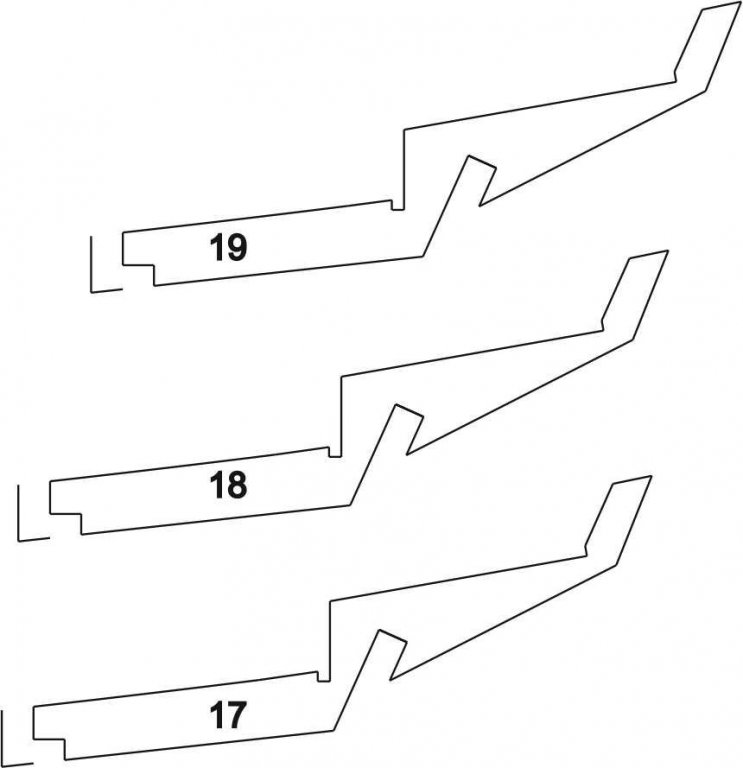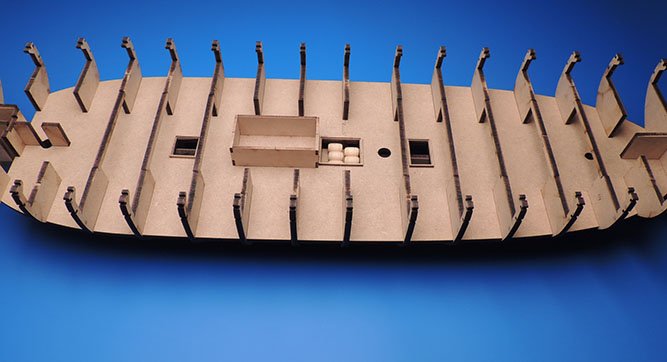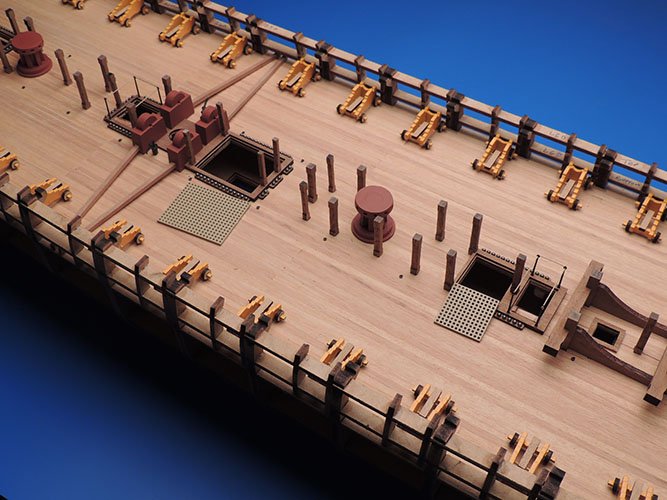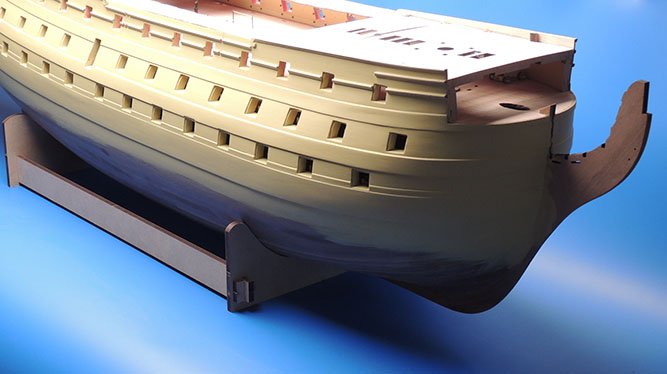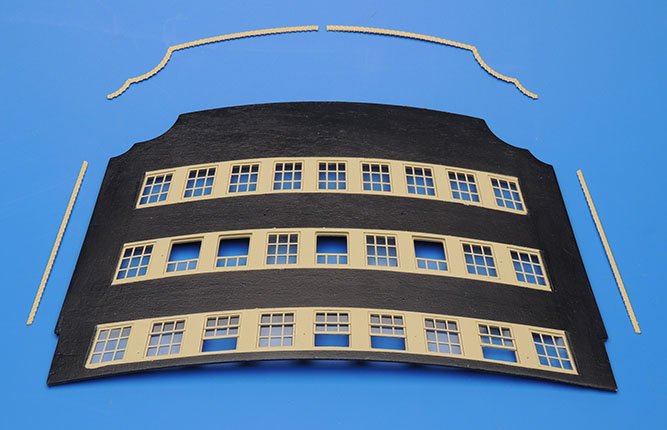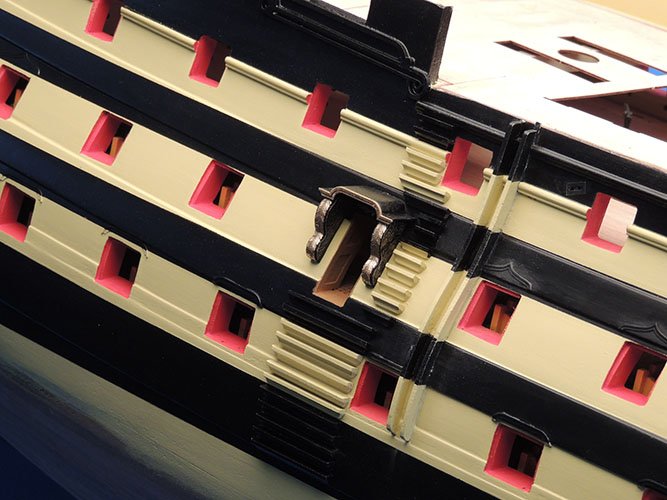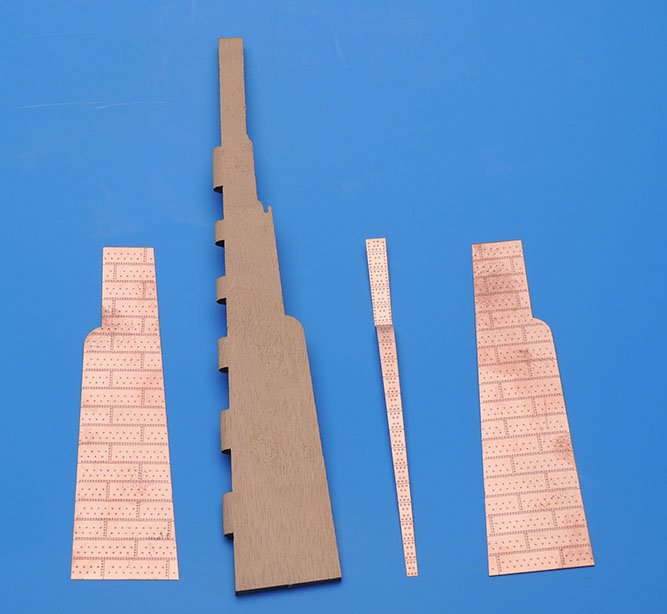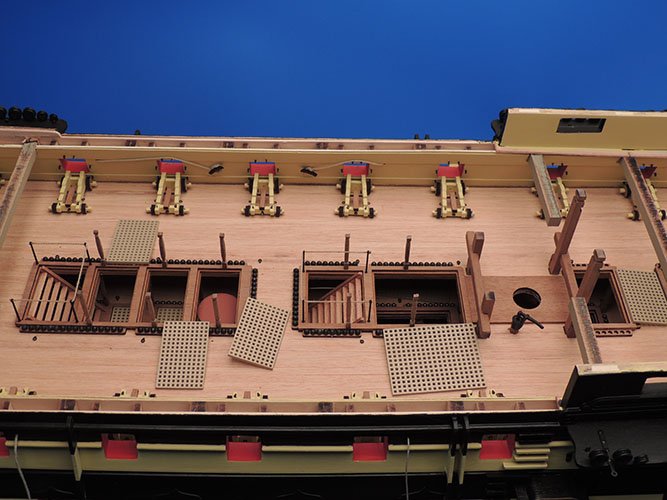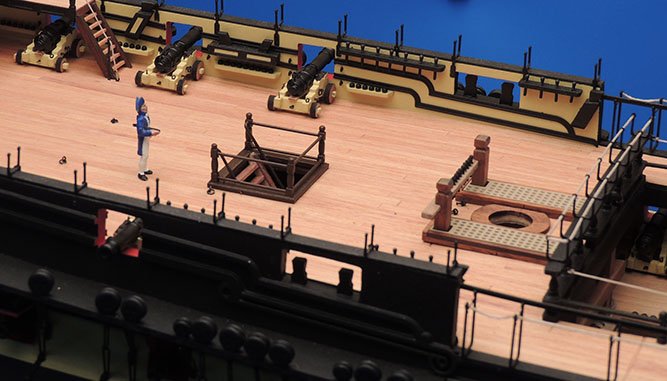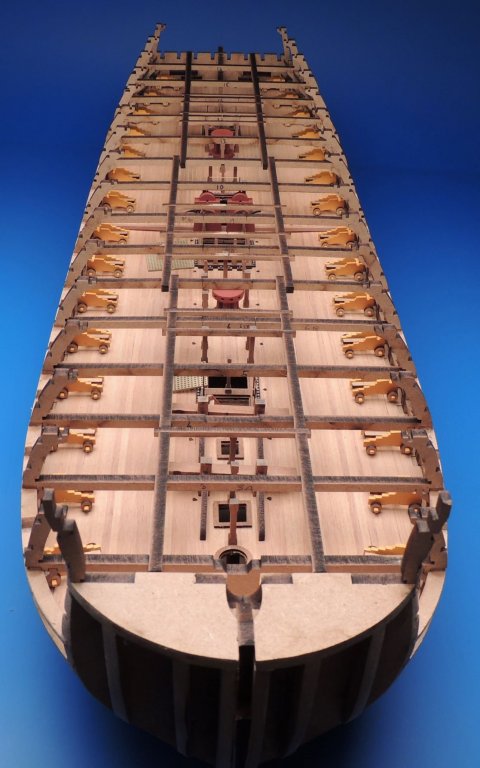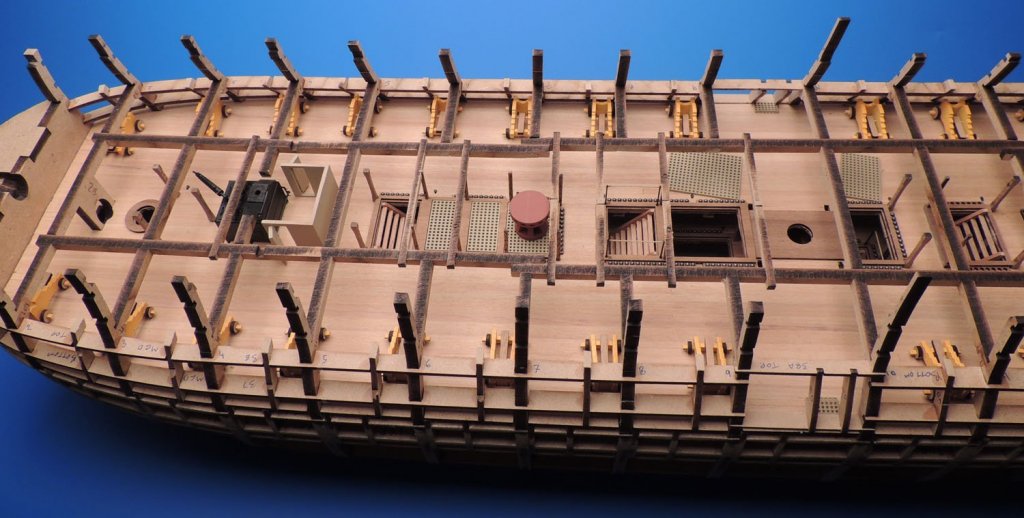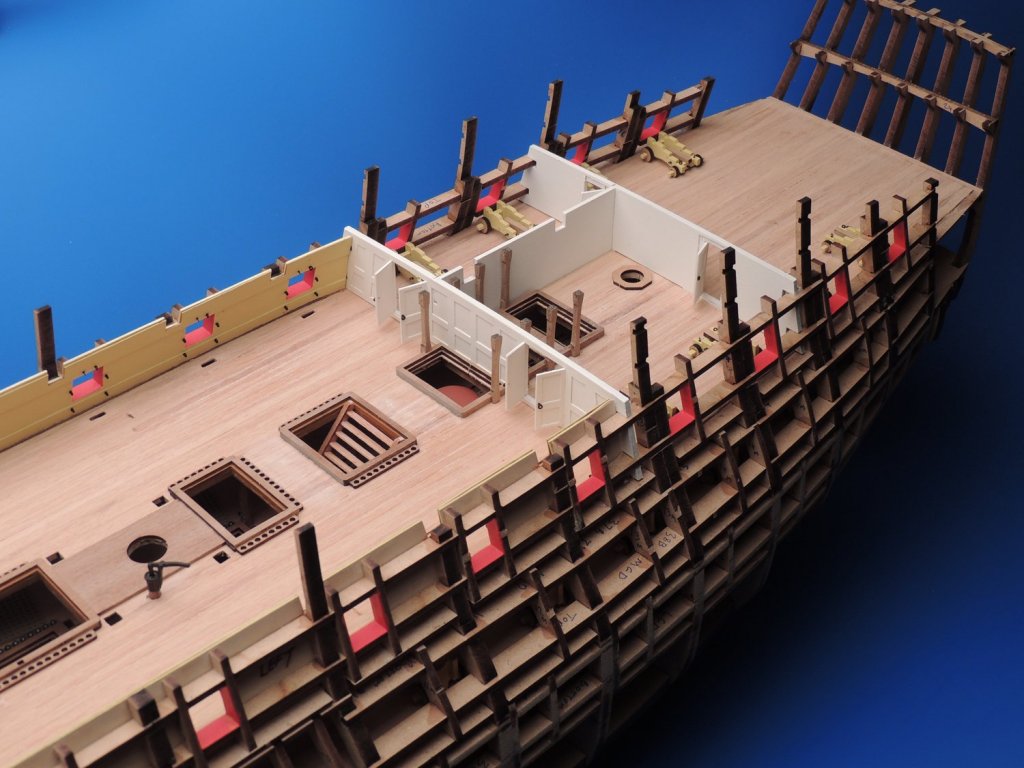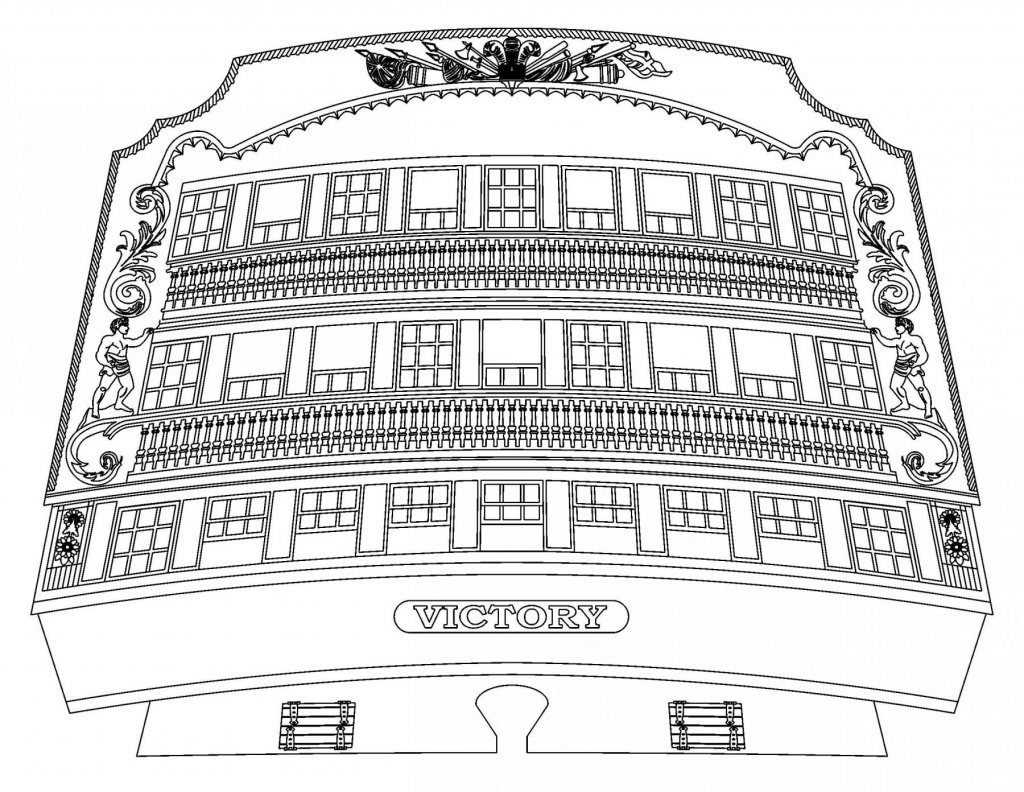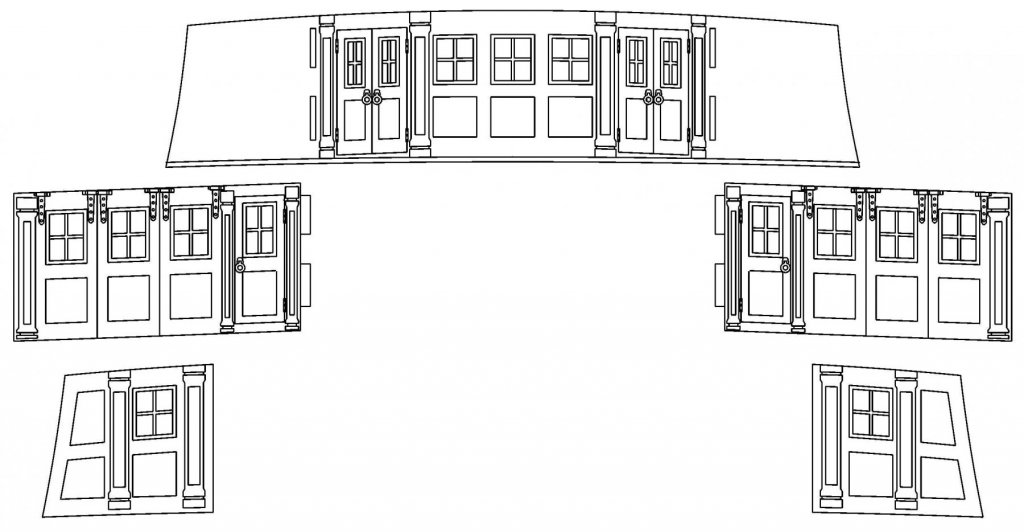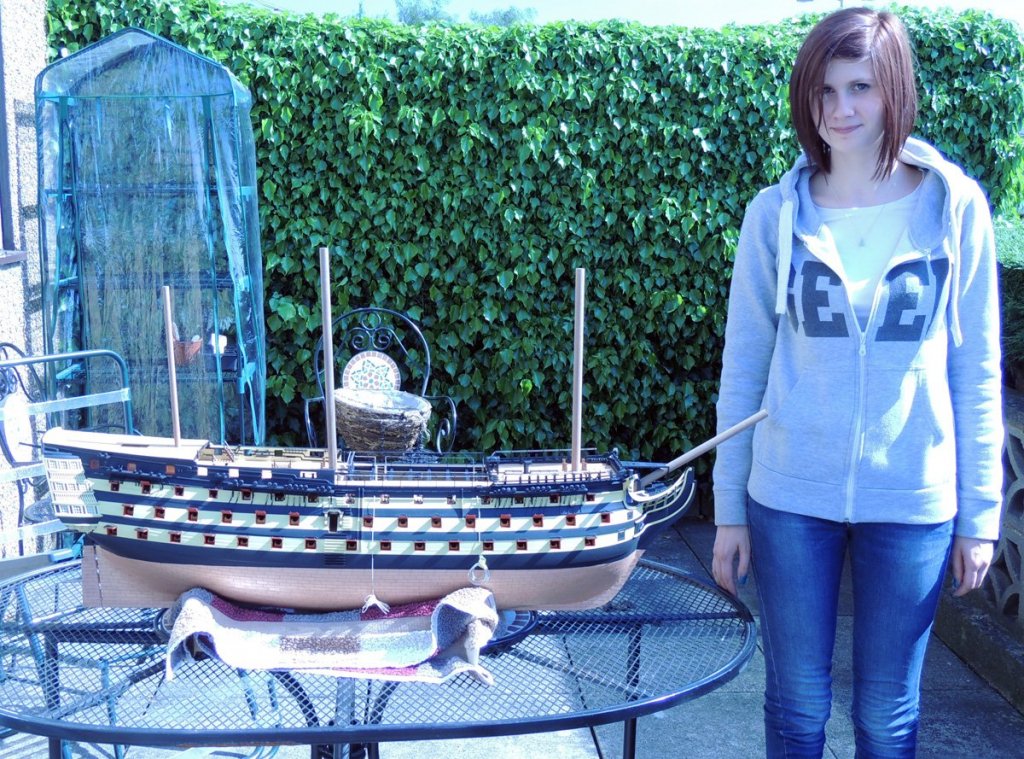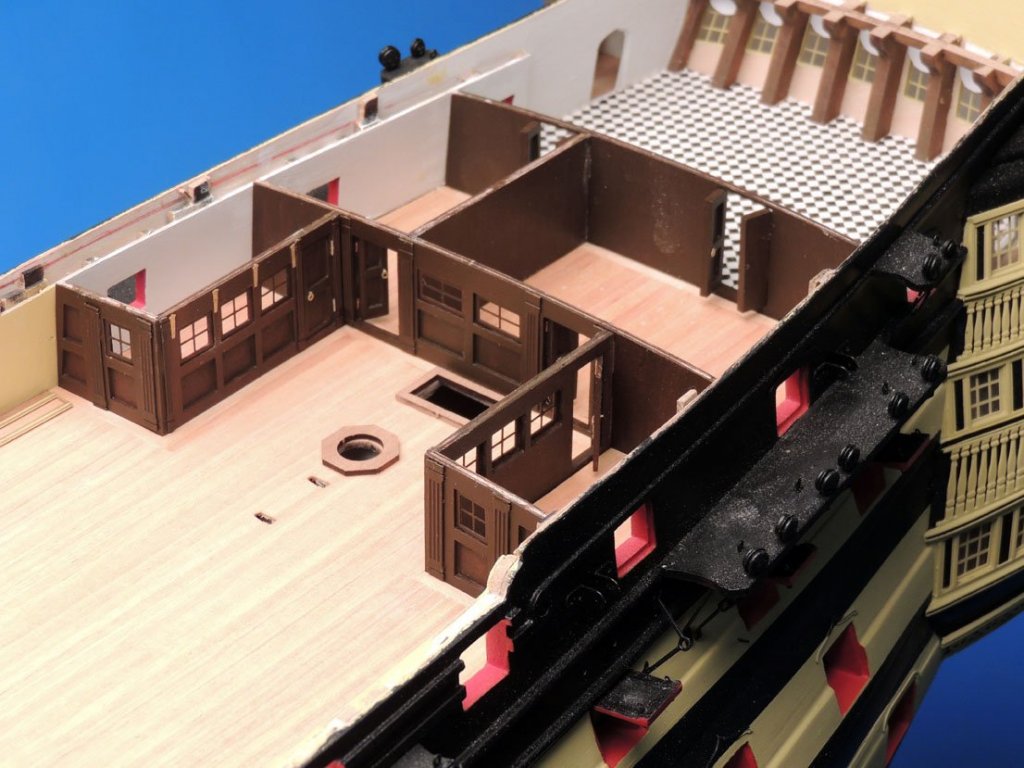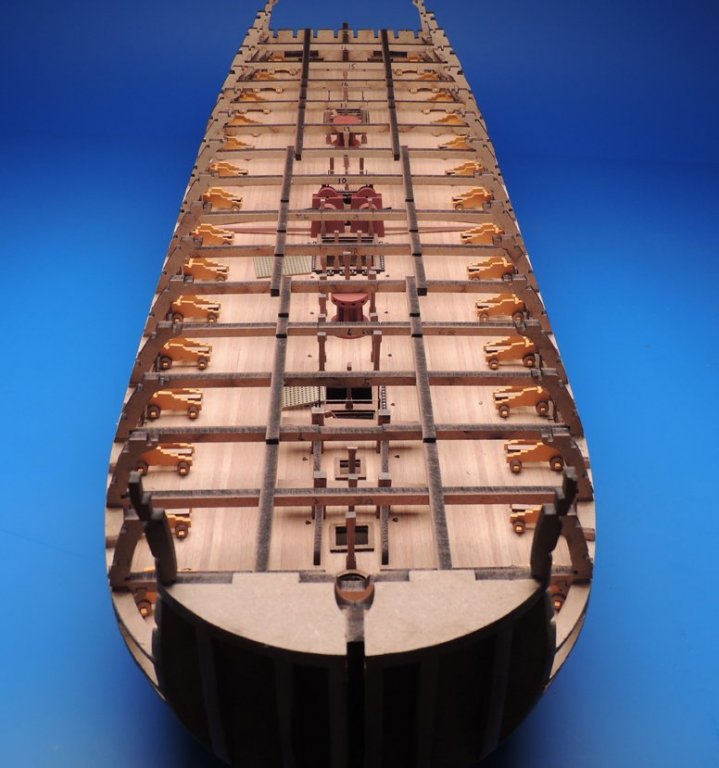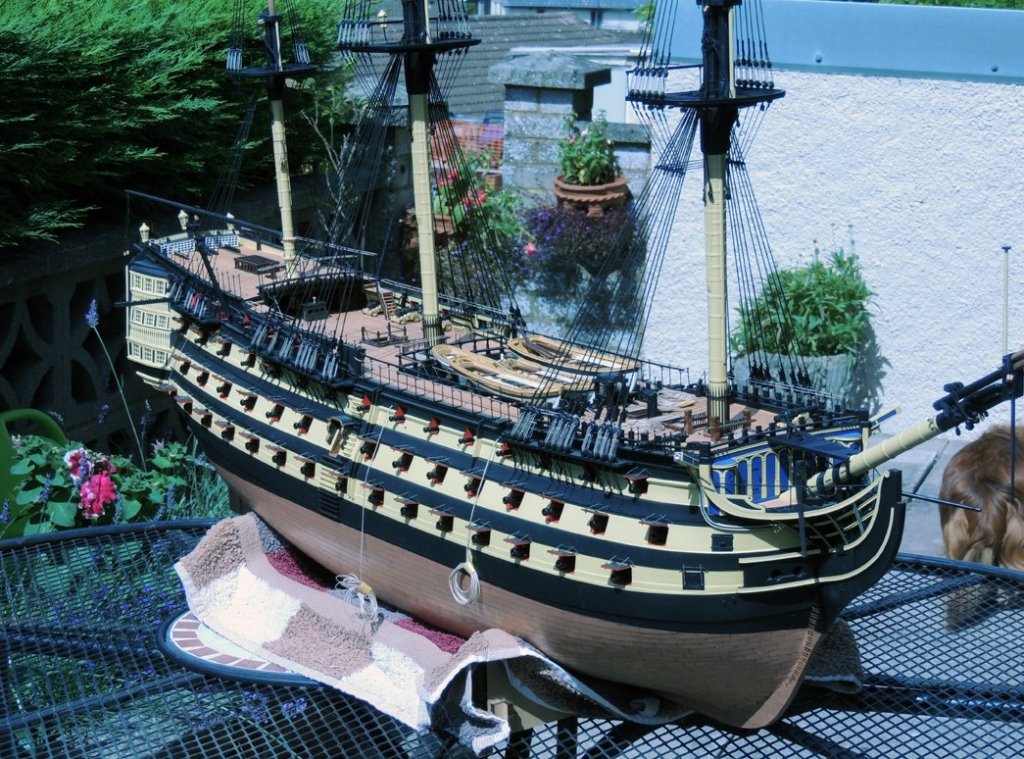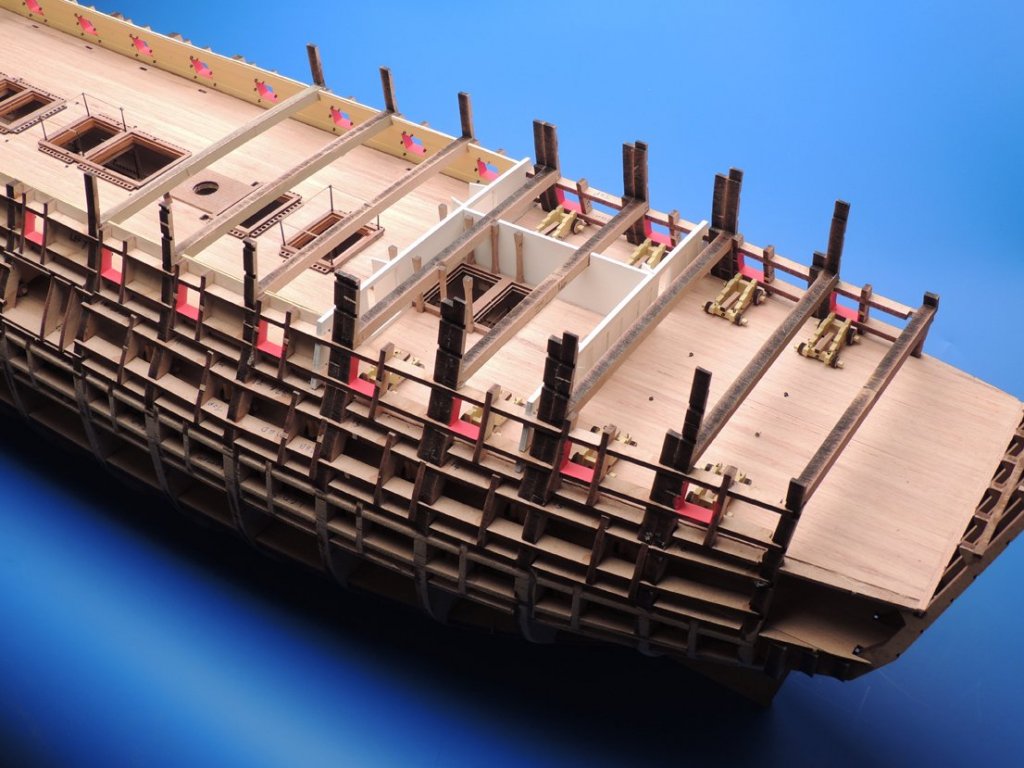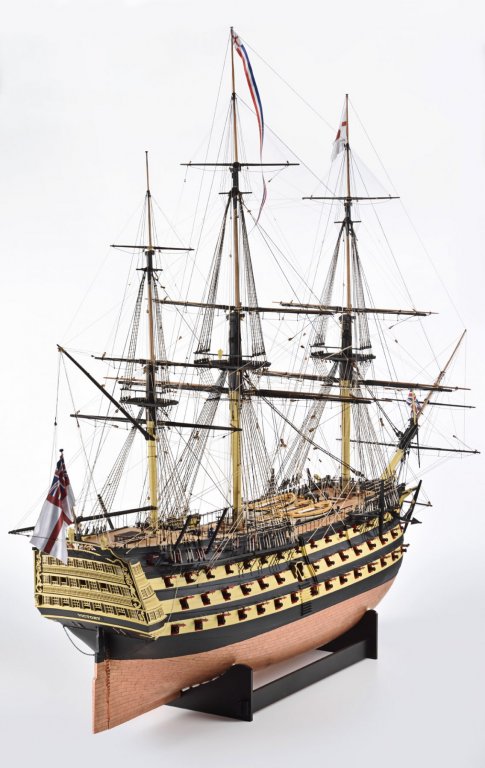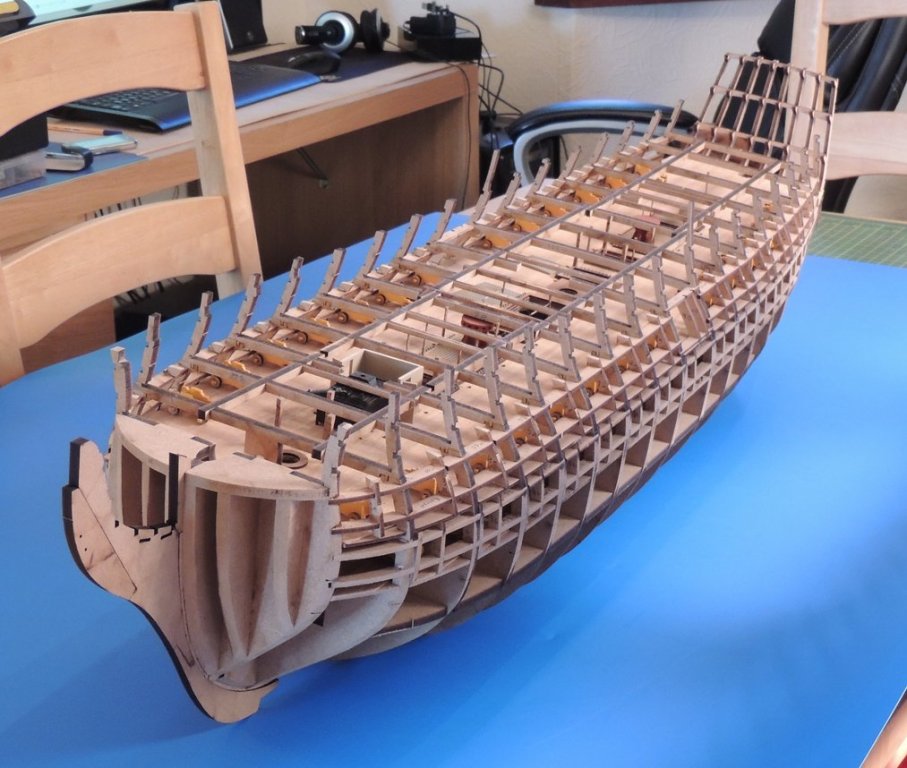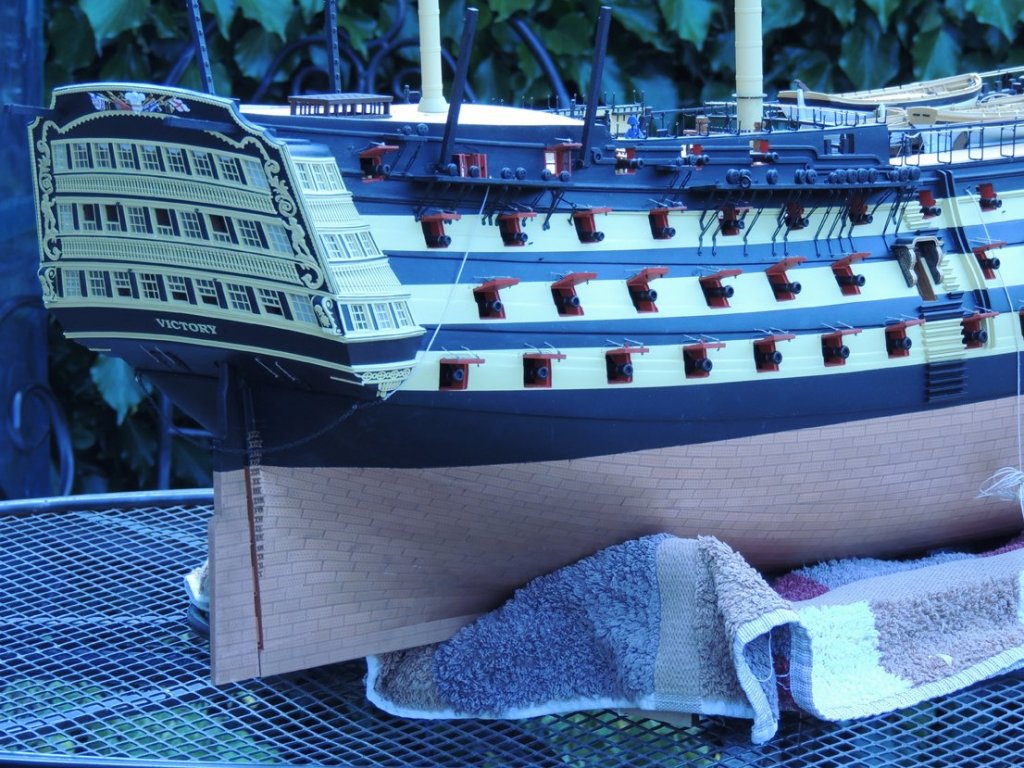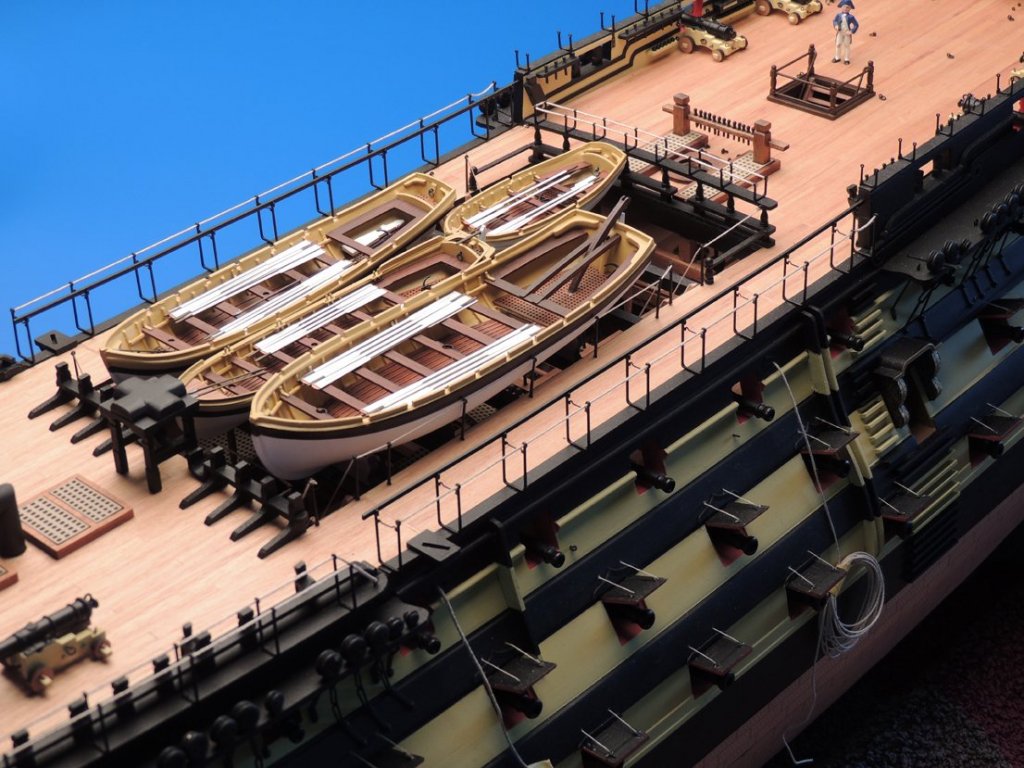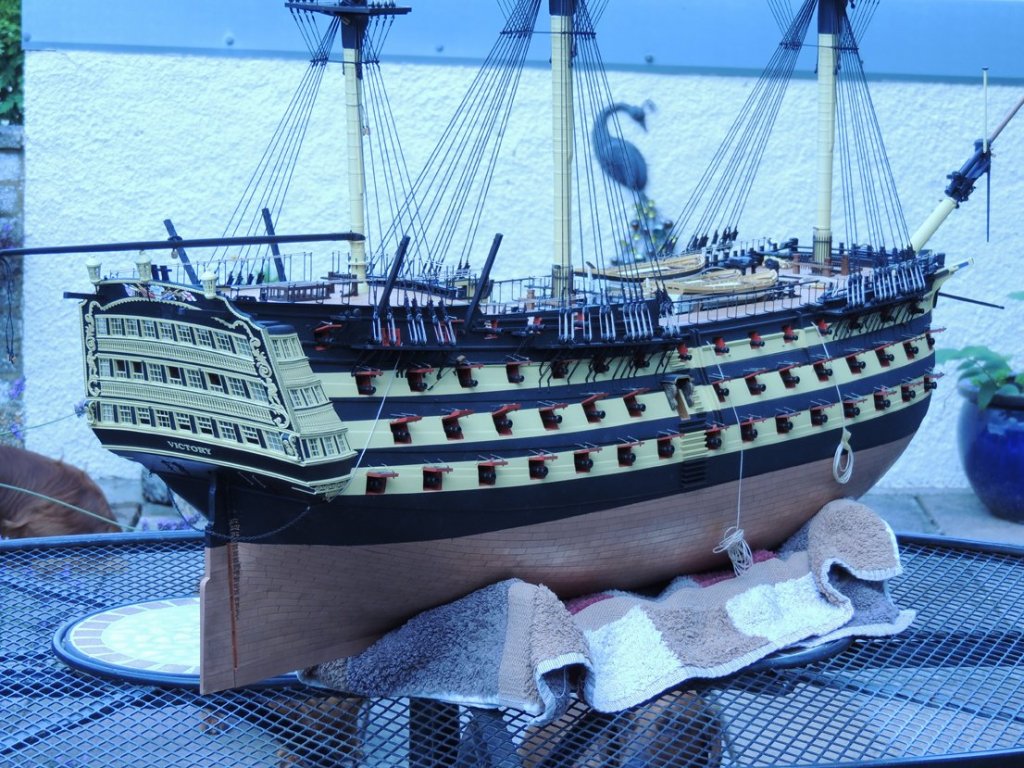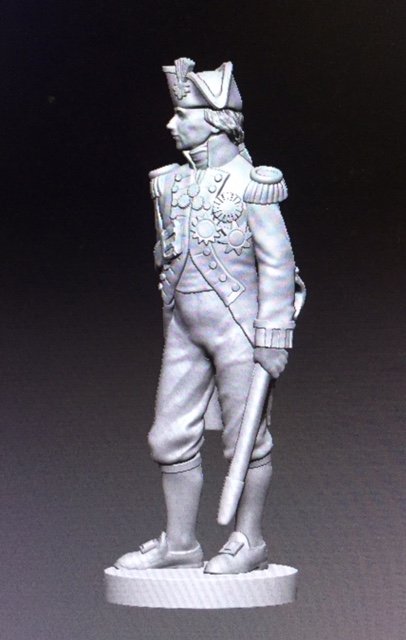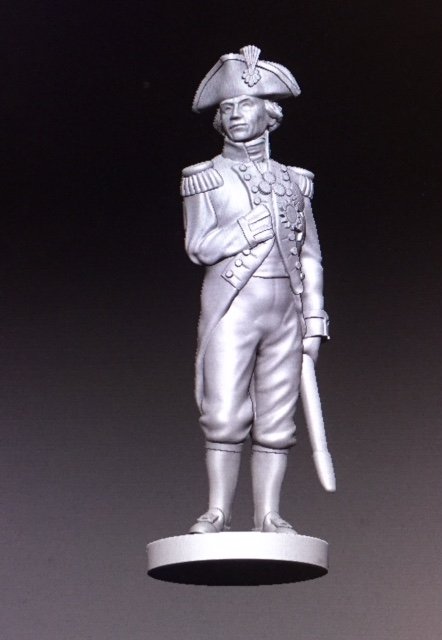-
Posts
2,320 -
Joined
-
Last visited
Content Type
Profiles
Forums
Gallery
Events
Everything posted by chris watton
-
Thanks! Just a continuation of where I was heading when designing for Amati. Although I am still unsure about the slot in the stem pattern, I am wondering if it will cause more headache for modellers down the line with complaints about them splitting. The upside of it is the fact the planking at the bow follows the same line as that on the original plans. But I shall see how I get on when adding the ply gun port patterns. I want people to enjoy the building experience, not be frustrated with it. The only things I changed from the first prototype parts are the stern frames and order of fixing the upper stern board/transom, and the addition of a door opening on the 9th bulkhead, in case anyone wants to detail the lower decks.
-
OK, I have put together the basic hull structure, and changed a couple of things since my first build. All of the MDF parts are glued together (superglue gel mostly for a 'speed build'). Everything has gone together fine, no problems. I have changed the stern lower counter and upper stern board. before, the upper pattern was to be added once planked, but I realised just how fragile those stern frames are, more so since I changed them since my first build, to be less unobtrusive. With this in mind, I now show both the stern counter and stern board glued in place as soon as possible, to give the very light and fragile stern area some rigidity. I have also moved these two parts over from the 1mm wood sheet to the 0.8mm plywood sheet, so they have extra strength. The lower decks are the correct height and also have the correct sheers. I will add another two tabs to the stem post to minimise it splitting. I have also attached a pic of my first build, which is in pear, in the process of being sanded after second planking was complete.
-
OK, have took half a night from work, to continue with Speedy. From tomorrow, I shall start adding pictures of the development, and you guys can tell me if you like the way it's going, or if there's anything I should change (within reason, don't ask for all exotic wood parts..) I have already build up one Speedy hull up to the second planking stage, and all was fine. I will now work on this second prototype, which will (hopefully) iron out any little things I may have missed from the first build. I will build this second prototype up to adding the pre-cut gun port patterns, as once that is done, all major structural work is finished, and I shall continue with the first prototype until complete. I may add another two spacer tabs to the stem post, where the planking slots into, based on what I have seen on the Alert build, to ensure there are no problems with this area.
-
Maybe I should have added extra tabs along the slot length like Speedy's (have attached a pic to show that part). What I did do with Alert was to put the front of the planks into the 3mm MDF pattern (parts 11), leaving enough of a slot for the 1mm outer planking. By the time I got to the second planking, the slot was very secure, due to the glue from the first planking.
- 335 replies
-
- alert
- vanguard models
-
(and 1 more)
Tagged with:
-
Sorry to read that, I guess I cannot send another stem post as it is glued in place? If you want another piece, I will happily send another. I did actually build the hull twice, as I do with all new developments, and I was happy with the slot. I had no problems with it on both hulls I tested, and I am intentionally heavy handed when it comes to parts like this. My impression of the limewood, despite my initial reservations, was that the grain was just as good as other decent woods. I did toy with using MDF for the stem and keel parts, but I know that more people than not would have hated that, I do not like using MDF for any parts that are shown when the model is complete.
- 335 replies
-
- alert
- vanguard models
-
(and 1 more)
Tagged with:
-
Just had some of the Speedy prototype parts arrive. A lot more parts than Alert, and 15 bulkheads.. I had one PE sheet missing, so will take a pic of the brass sheets when I receive, but the copper sheets look fine. For the nail heads, I copied exactly a picture I have of an original Victory copper plate. I have tried to make no compromises with this kit, and bought my own supply of 0.8mm ply for the more critical parts. below is not all of the laser sheets, I have the laser engraved deck too. I think I will separate the 1mm wood gunwale into two parts per side, to minimise the chance of it breaking. I have since removed the holes around the rims of the lower tops, as for the period I am basing the model (1800-1802), crowsfeet would not have been rigged. I have even included a few hatchets in the 0.4mm PE, as I know they used these to remove tangled rigging when in battle, and Speedy was in battle a lot!
-
I have just had an email back for the laser cut people. The 2mm was specified by me as MDF (non grain) parts, but they arrived to me in 2mm limewood. I am having these parts (17, 18 and 19) re-cut in the material I originally specified. When I receive them, please let me know if you would like these as replacements, and I will send them out. Thank you, Chris
- 335 replies
-
- alert
- vanguard models
-
(and 1 more)
Tagged with:
-
I had 100 kits worth made. When I need to have another load done, I shall change the parts so that the end slots on the stern frames are 'L' shaped, rather than 'U' shape slots. You could cut off the ends so you have parts that look like the drawing - but they should fit if you slot them into the rear most bulkhead and then slot that bulkhead in place.
-
I have added a small amendment in my covering letter I put in each ALERT kit, concerning the stern counter/board frames: "Please note that parts 17, 18 and 19 should be slotted into the rear most bulkhead (the one that is angled) before the rear most bulkhead is slotted in place in the keel." The 2mm sheet was meant to be 2mm MDF (this is what I had when building my model), but for some reason, the production sheets are all in limewood. This is great, but the 2mm MDF is always 2mm, which is why I chose the material for these parts.
-
OK, just sorted out a few more pics, mostly from the manual (There are 917 construction pics and well over the same amount for line drawings) The first is the orlop, when I started the build, I was still waiting for the many sheets of PE to be delivered, so couldn't add the gratings (all PE so I could design to exact size). Some pics show the model a little rough around the edges, this is because it is before any final model touch ups..
-
Here are the three deck levels, but the assembly starts at the orlop level. I know some baulk at the thought of using MDF (I did to begin with, if I am honest), but it is the perfect non-varying thickness of quality MDF that allowed me to think of such designs. Plywood thickness is never constant, if I used that, this assembly would have been a disaster, some hulls may end up being a few mm higher than they should, and some a lot lower, as ply thickness can vary from 5.6-6.4 for 6mm thickness. The structural integrity of this hull is very strong, plus all gun ports already worked into the hull structure, so no guessing or marking out needed. The way this is designed is that you can build up to one deck level and detail it very easily without obstruction, and when complete, build up the next level and do the same, like a layer cake. ETA - Even all of the gun port sills and gun port lids were pre-cut to fit each individual gun port.
-
Here is a drawing of the stern, with all the PE parts in place. In the kit, there is an option for how you want to show the windows. You can have them open, part open or closed. If some are open, you can peer through them and just make out the deck detail along the hull. The balustrades in between the window tiers have the exact same number as the real thing. I taken a lot of pictures of the stern when at Portsmouth, and imported the best into my CAD program, and then traced the outlines of the decoration so it should be all a near exact match for the real thing. I know that one version of Victory has these parts all out of proportion, I didn't want anything to stand out that may be wrong.. Also, on my visit, I noted that the poop screen bulkheads have hinges at the top, presumably to fold the bulkheads up and stowed under the poop deck when cleared for action. I threw out the old version of the bulkheads I had already made up and replaced them with the new ones with better detail.
-
Those stern transom frames were originally the height of the stern transom top edge, but they are sacrificial above deck level, I shortened them so they'd be less inclined to break before time.
- 335 replies
-
- alert
- vanguard models
-
(and 1 more)
Tagged with:
-
I had the Tanganyika wood strip arrive yesterday, so Alert is available with two prices, the 'premium' with the pear and box wood, and the new version with the Tanganyika strip, which is £20 less. The MK shipment should arrive next week, so their kits and blocks will be available on my site. I think I have priced everything quite reasonably. This week, I have been mostly doing the Speedy mast, yard and rigging drawings (6 x 50x70cm plan sheets), which will then be transferred from CAD into Adobe, where I will add text. I will be receiving the Speedy prototype parts (laser and PE sheets) next week, too, so gonna get even busier!
-
Don't quote me, but I think there may be some real movement regarding Amati releasing the 64th scale Victory. I would be so happy to see this released - I no longer work there, but this was two years work for me, and would be fantastic to see it available to buy.
-
I will do the figures in 48th, but the first lot will be 64th and 72nd. I have to pay to get the files in the different sizes 3-d printed, which isn't cheap. I suspect I would be lucky to cover the costs of just the printing, even before I have to pay for the resin mounds and castings, for 48th scale. But I do intend to extend to the larger scale at some point. If all goes well..
-
Amati own the rights, they paid me to design it for them, so it is 100% Amati's kit. I have got more pics, also, if you do a search on MSW, there is a long thread that is full of development updates with lots of Victory pictures I took. I have added the one with my step daughter (she'll be pleased I dug that one up), so you can get an idea of the size. Most other pics are in the large format (for the building manual), so too big to post. ETA - I have added a couple of (very bad) pics I took when I delivered the Victory model to Amati, she is sitting next to Vanguard.
-
Overall, she is 1.6 metres long. It dominated my large dining table when finished her. There are no dummy barrels on this one, all fully detailed carriages with full length cannon. There should be a thread with a lot more pics somewhere on here. I do not work for Amati any longer, so cannot tell you when it will be released. What I do know is that I did complete everything, designs, instructions, manual, plans. I think Amati are worried the kit will cost too much, but I suspect it would still sell. But, as I said, I no longer work there, it may be an idea to email them, asking for it to be released - it would be nice, as that development was two full years of my life. Even took a trip to Portsmouth to take my own research pics.
-
Hopefully Amati will release my new design for Victory, which I completed around 4 years ago. The Amati version is fully detailed inside and out.
-
Thank you, Gary. I am so pleased the external sleeves are doing their job. A nice company made them for me, after giving dimensions. I received them two days later. The third kit is something that my head has been telling me to do, but my heart wants me to do Bristol a bigger 'wow' kit), but at this stage, the one I have chosen makes more sense, as it will be pretty...
About us
Modelshipworld - Advancing Ship Modeling through Research
SSL Secured
Your security is important for us so this Website is SSL-Secured
NRG Mailing Address
Nautical Research Guild
237 South Lincoln Street
Westmont IL, 60559-1917
Model Ship World ® and the MSW logo are Registered Trademarks, and belong to the Nautical Research Guild (United States Patent and Trademark Office: No. 6,929,264 & No. 6,929,274, registered Dec. 20, 2022)
Helpful Links
About the NRG
If you enjoy building ship models that are historically accurate as well as beautiful, then The Nautical Research Guild (NRG) is just right for you.
The Guild is a non-profit educational organization whose mission is to “Advance Ship Modeling Through Research”. We provide support to our members in their efforts to raise the quality of their model ships.
The Nautical Research Guild has published our world-renowned quarterly magazine, The Nautical Research Journal, since 1955. The pages of the Journal are full of articles by accomplished ship modelers who show you how they create those exquisite details on their models, and by maritime historians who show you the correct details to build. The Journal is available in both print and digital editions. Go to the NRG web site (www.thenrg.org) to download a complimentary digital copy of the Journal. The NRG also publishes plan sets, books and compilations of back issues of the Journal and the former Ships in Scale and Model Ship Builder magazines.




